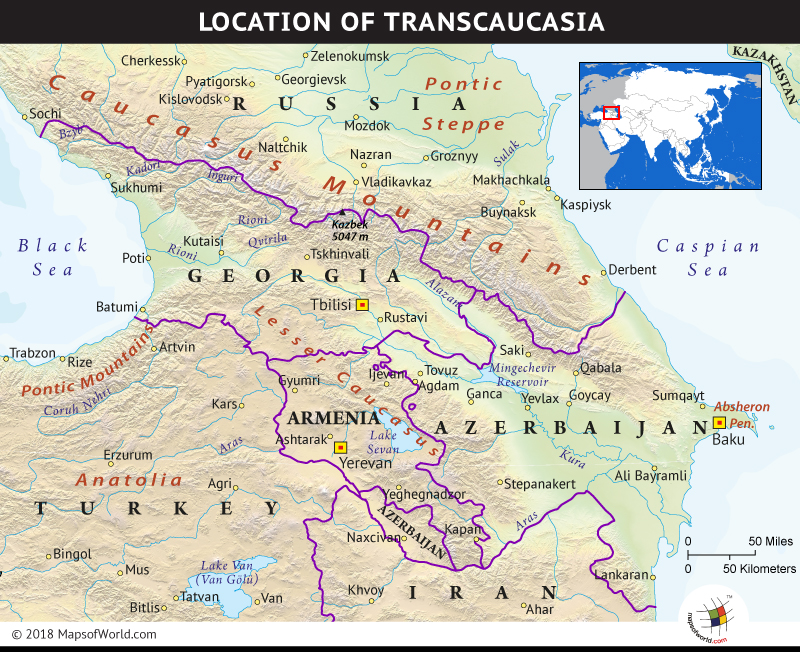What is the history of Transcaucasia?
The highest mountain range in Europe – the Caucasus Mountains are attributed as the natural division of the Eurasian continent. Spanning the southern portion of these mountains for about 71,850 square miles, is the region named ‘Transcaucasia’ or ‘South Caucasus.’ Surrounded by the Black Sea in the west, and the Caspian Sea to the east, Transcaucasia comprises the four modern-day countries are: Georgia, Azerbaijan, Armenia and Iran. Oil, manganese ore, tea, citrus fruits, and wine are some of the significant goods produced in the region, which have been the driver for a thriving economy.
The word ‘Transcaucasia’ is derived from the Russian-language word Zakavkazie, which refers to ‘the area beyond the Caucasus Mountains.’ The word further comes from ‘Kaz-kaz,’ which was a reference to people who had inhabited southern shore of the Black Sea in the ancient days. The historical nomenclature shows the significance the region holds since pre-historic times. Numerous cultures and ethnic groups have existed here since the 5th century, owing to the ranges that were a land route for cultural mixing with the Fertile Crescent Civilization, and thus a vast number of languages. The isolated location has contributed to preservation of culture for many centuries.
Popularly known as the ‘father of history’ – Greek historian Herodotus has claimed that the Colchians- who were black skinned Egyptians, have been the first inhabits of the region of Transcaucasia, despite the inhospitable terrains of the mountains. The major significance of the region is that it served as the most feasible route for migration, especially for people who moved from South West Asia to Central Asia back and forth. They even left their detachments in the region, which is why now the land is often referred as ‘ethnic museum’ by many.
Iran, Russia and Turkey are situated on its peripheries, and they all have tried to conquer the land in the past. Between the 6th to 8th century, Greeks established their contact, as they began to settle on coasts of the Black Sea. It was the very famous Alexander the Great, who freed the regions of Armenia and Georgia from Persian powers. Over the years, Mongols, Sassanian, Byzantine, Ottoman, and even Iranian empires have tried to annex the countries in the region, while bringing their cultures into the population. However, the country of Georgia also witnessed immense devastation due to colonization between 10th to 13th century.
Russia also had interests to conquer Transcaucasia for centuries, and finally in the 18th century it occupied a region of Georgia, and aimed to extend its empire. After the two Russo-Persian Wars: (1804-1813) and (1826-1828), the Russian Empire annexed major areas of Caucasia, except western Armenia which was under the Turkish rule. Russian empire collapsed owing to the numerous nationalist movements at the end of the 19th century. An independent Transcaucasian federation was declared, which included independent states of Armenia, Azerbaijan, and Georgia. But this was short lived, as the Soviet Union had taken control after World War II.
Nationalist sentiment in Transcaucasia reemerged in the late 1980s, when the Soviet Union began to collapse, with Armenia, Azerbaijan, and Georgia achieving full independence in 1991. However, the countries continued to experience violence amid ethnic groups and political instability, and economic decline.
Know more:
Related maps:




